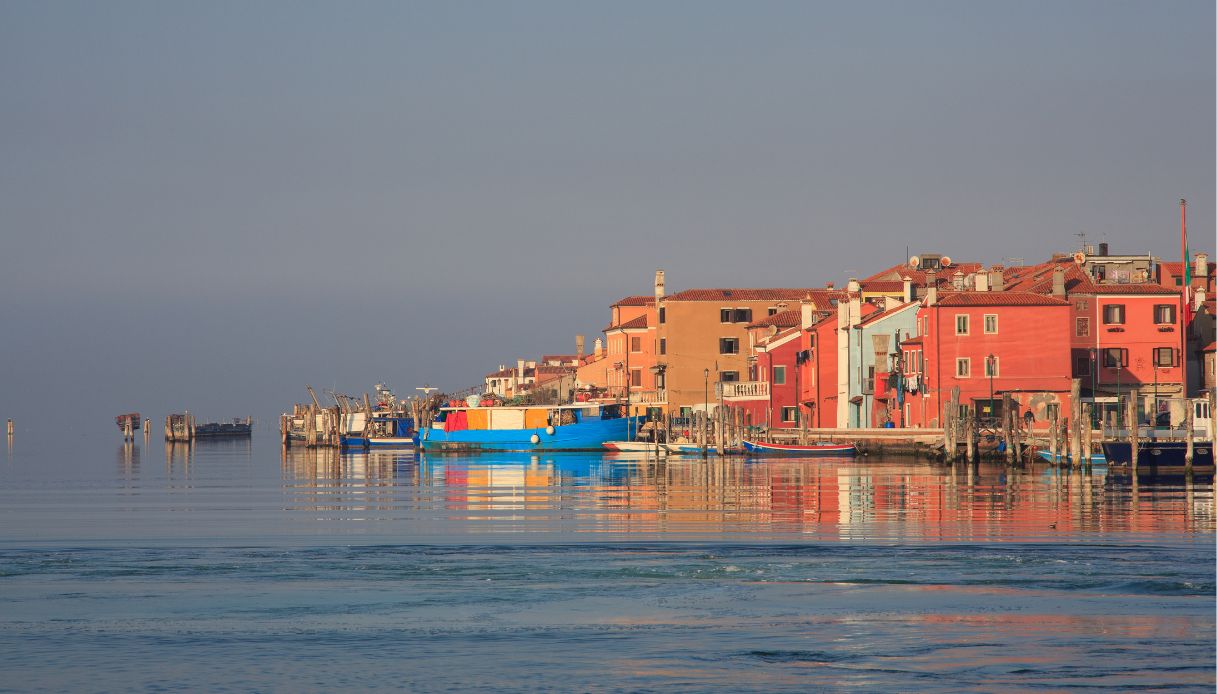
22 Lug Pellestrina Island: beaches and what to visit to discover the other lagoon
The Pellestrina Island is already familiar to those who want to enjoy the coolest events on the Lagoon but without the typical chaos of Venice.
But the island is also much more. It rises on a tongue of land in the heart of the Venetian Lagoon and forms a sort of virtual bridge between Lido and Chioggia. A true paradise worth getting to know.
How to get to the Pellestrina Island
To get to Pellestrina you must go to Chioggia and reach the landing stage in Piazza Vigo. Here you can take the vaporetto line 11, which allows you to enjoy a half-hour crossing that ends right on the little island. During the crossing you will find yourself immersed in the beauty of the lagoon.
For those who wish to do so, it is possible to take a bike on the vaporetto, so as to visit Pellestrina Island by bike, which is a popular alternative for many.
For those who want to get to Pellestrina by train, the reference station is Venezia Santa Lucia. From here, you will then have to use the ACTV water transport service. Don’t worry: the stop is right in front of the station exit. If you don’t want to take the vaporetto you can prefer water taxis or private transport.
Pellestrina Beach
We are in the Venetian lagoon and, specifically, on the southernmost and most seaward shoreline. The territory of the island, which extends for 11 km but with a very narrow width, is included in the Municipality of Lido-Pellestrina.
One of the reasons the island is famous is precisely the beach. The beach at Pellestrina is popular with all those who want to spend a few hours relaxing but without straying too far from Venice.
Very interesting is the Port of Malamocco that is enclosed between two coastlines, but also the Port of Chioggia that divides Pellestrina from the city. The most characteristic area, however, is the one facing the sea. Here one encounters the most authentic Pellestrina and an area fortified by what are known as the murazzi.
The beach on Pellestrina Island is quite wide and is spectacular from a naturalistic point of view. This area is not fully incorporated into the routes of mass tourism and it is for this reason that those who want to enjoy nature and tranquillity come here. An alternative way to discover the beauty of the Venetian lagoon, which here shows its most authentic face.
When you arrive at the murazzi, you can choose your favourite spot on the beach and spend a few hours of pure pleasure.
What to do on Pellestrina Island
Even before arriving on the island, attention is drawn to one of the most beautiful Lipu Oases in Italy: the Ca’ Roman Nature Reserve. For those interested, the oasis can be visited by appointment. Here there are 18o varieties of birds, including Kentish plovers and little terns, and 18 species of protected plants. A true spectacle for nature lovers in all its forms.
The moment you set foot on the island, getting off at the Cemetery stop, you immediately realise that what you are about to embark on is a very special adventure. The 11 km of the island have much to give those who come to visit.
Pellestrina Island is divided into four districts, which are Zennari, Vianello, Busetti and Scarpa. There are fewer than 4,000 inhabitants on the island and their pace of life is slow and relaxed, and this is the air one breathes for those who come to visit.
Amongst the calli and piazzette there is so much to do and discover. The advice? Stroll around with your nose turned upwards so as not to miss an ounce of beauty.
One itinerary for discovering Pellestrina Island is the one that starts at Punta di Ca’ Romana and heads north, towards Porto Secco to discover first the beach and then the areas of San Pietro in Volta and Santa Maria del Mare.
Along the way, you can visit the island’s small squares and most famous inland calli. Here you are in the heart of the lagoon and among the narrow streets of the centre, between Calle della Chicchierina, Calle dei Forni and Calle delle Ciaccole, you can experience like a true local. This is also the area of accommodation and flats for tourists, all obtained in what were once fishermen’s houses.
It is an authentic and very interesting experience that introduces another face of the lagoon, especially to those accustomed to the more emblazoned Venice.
One of the island’s treasures is the Zendrini tower, which is worth a visit, as is the church of San Vito e Modesto (18th century). As you walk to discover the beauties of the historic centre of Pellestrina, you may come across old lace-makers embroidering in the traditional way. This is an area of lace and beauty and it is impossible not to be fascinated by all that one discovers here.
Those arriving on holiday in Venice should consider visiting Pellestrina Island, even if only for a few hours, because it deserves it.



